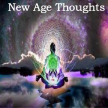Introduction to Buddhism: a Three Part Series on Buddhism
Since Buddhism is such a broad topic, there will be at least three articles that discuss Buddhism. The first article will cover the history of Buddhism, which consists of who the founder is, and it will introduce some of the doctrines.

Buddhism is a spiritual path that is difficult to call a religion. This is because there aren’t any gods or goddesses that are prayed to. However, it does have some creeds that make it similar to religions. Since Buddhism is such a broad topic, there will be at least three articles that discuss the Buddhism. The first article will cover the history of Buddhism, which consists of who the founder is, and it will introduce some of the doctrines. The second will deal directly with core doctrines that are found in Buddhism. It will go into detail about them. The third will give some ideas of how to implement Buddhism into your daily life, or if you so decide, convert to Buddhism. It will also include some of the various sects of Buddhism that are found around the world.
Introduction to Buddhism
As it has already been said, Buddhism, in my opinion, is more of a philosophy that serves as a life guide to the practitioner more than it is a religion. However, for the sake of simplicity towards this article, we shall refer to it as a religion. In order to understand this faith system, we need to dive deep into the past to understand its ancient founding. Much like the founding of Christianity, the followers of Jesus Christ founded the first Christian Churches. Jesus himself did not found it, as he was a practicing Jewish man. The founding of Buddhism is very much the same. A Hindu man by the name of Siddhartha Gautama was able to reach Nirvana and became known as the Buddha, or enlightened one. The Buddha is the main figurehead of Buddhism.
Siddhartha Gautama
Siddhartha Gautama is a man that has much myth surrounding his life, which has resulted in great debate amongst historians. The debate consists of when he was born, what his life was actually like, and whether he was truly a real person. However, what will be provided for you is not so much the debate topic, but it will be a brief introduction into his life. Gautama was born in Northern India, or Nepal, in the 6th century BCE. He was a prince who never left the castle and was constantly surrounded by all of the pleasures that life could offer. He was married to a beautiful woman at the age of sixteen and his father built him three different palaces for him and his wife to enjoy. The three palaces represented the different seasons. However, with all of the wealth in the world, he became curious to know what the outside world was like. At the age of twenty-nine, Siddhartha decided to leave his palace to view the outside world. He planned four different trips. What he came upon during the four excursions outside of the castle walls is known as the “Four Sights.” The first three sights showed him that life was nothing like it was in the palace. He saw that people were suffering from old age, disease, and he was introduced to death. The fourth sight, he saw a homeless man. However, this homeless man was different than we think in the traditional western view. This homeless man was called a Sadhu. A sadhu is a wandering ascetic (a monk) who is considered very holy. In western culture, they are known as yogis.
Basic Doctrines
After Siddhartha came in contact with the Sadhu, he devoted himself to figuring out what was the cause of suffering and death. He decided to leave his extravagant lifestyle and joined up with the other wandering ascetics. He began to practice the ascetic lifestyle, where he would eat only one meal a day, which, at times, would consist of one grain of rice. He was an ascetic to the extreme. He lived alone and caused much suffering onto his body and mind. He came to the realization that causing himself to suffer was not the way for him to learn to end the worlds suffering. One day during his wandering, he decided to sit under a Bodhi tree and meditate. It was here that he achieved his moment of enlightenment. He devoted the rest of his life to teaching what he called the “Middle Way,” a path to overcoming suffering and achieving enlightenment, which he called nirvana.
After his enlightenment, he began to deny the ancient Indian religious and philosophical belief systems maintained in Hinduism. One belief that he tried to cancel out was that we have the atman (soul), which is eternal. The Buddha did not believe this was true. Rather, he saw human souls as being comprised the Five Aggregates, which include sensations, perceptions, and thoughts. He believed that there is no core “I” beneath these things, and that man’s desire for such permanence is the cause of his suffering. This doctrine is known as anatta (No-Soul). By recognizing that everything in the world, including ourselves, is impermanent, we are ready to begin the path of overcoming suffering. The Buddha explained that there are Four Noble Truths: dukkha (suffering), tanha (desire), nirvana (annihilation), and marga (the eightfold path). He also taught the “Middle Way,” which was an escape from the cycle of samsara (rebirth) caused by our karma (actions in past life).
The Eightfold path is a doctrine that acts as a guiding wisdom for the followers of Buddhism. Acting properly, having mental disciple and attaining wisdom are all parts of the eightfold path. In order to act properly, one must have love and compassion for all things. The follower must be careful with what they say, how they say it, how they act, and what their vocation is. Lying and stealing is not allowed, nor is harming yourself or others. Mental discipline comes from nurturing and enlightening their minds to improve awareness and concentration, which comes through intense meditation. It also includes trying to avoid distractions or having hateful thoughts. Wisdom involves overcoming selfishness, violence, and understanding the true temporary nature of reality.
Everything in the world is interconnected. This is the concept of “dependent arising” (pratityasamutpada). Rather than having one cause, the Buddha saw everything in the world as both the cause as well as the effect of everything else. For this reason, he sees one’s actions (karma). Only by realizing the true interconnected and impermanent nature of the world will one become enlightened (nirvana) and break the cycle of rebirth (samsara).
About the Creator
New Age Thoughts Chicago
I am pretty well versed in esoteric and occult knowledge. I pride myself in knowing about history and religion. I want to share my passion for each of these things with you guys! Hopefully you enjoy it!






Comments (1)
I am a practicing lay Nichiren Shoshu Buddhist for 50 years. See www.usaBuddhism.com where I post doctrine